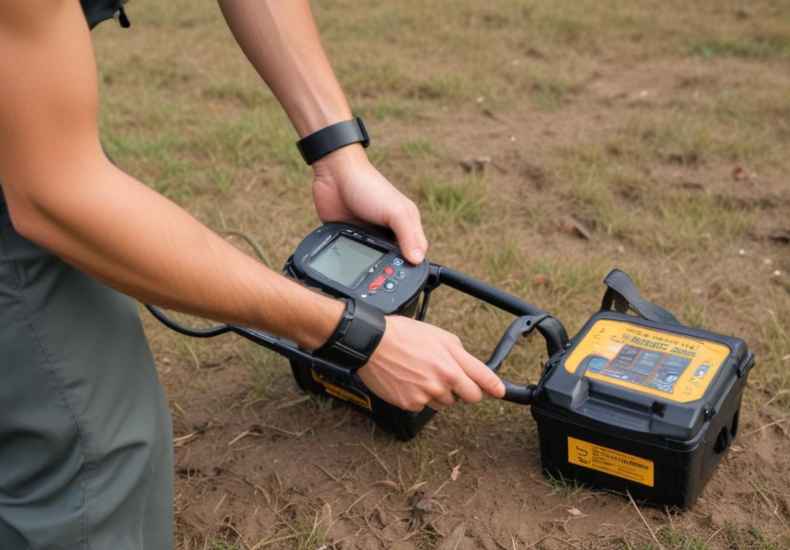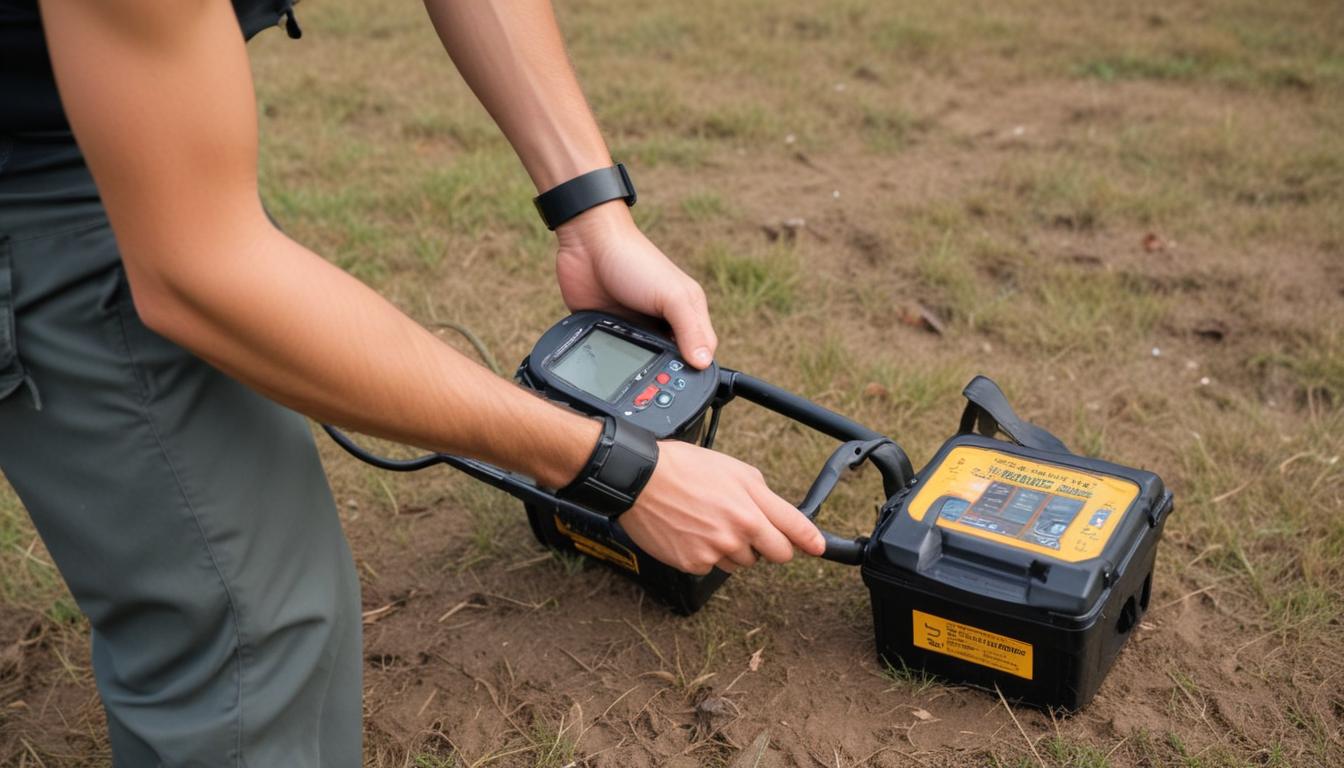
How long do metal detector batteries last?
The longevity of battery life in metal detectors is influenced by several factors, making it crucial for users to be aware of the various elements that can affect their device’s performance. One primary factor is the type of battery used. Alkaline and lithium batteries, for instance, provide different levels of efficiency and durability. The detector’s technology also plays a significant role; models with more advanced features such as GPS or wireless connectivity might drain battery life faster than simpler units.
Environmental conditions significantly impact battery life as well. Cold weather can cause batteries to deplete faster, which is a vital consideration for metal detector enthusiasts who enjoy searching in cooler climates. Equally, extremely hot temperatures can affect battery chemistry, potentially shortening battery life. The usage frequency and duration also contribute to how quickly batteries might run out; intensive use in long metal detecting sessions requires more power, thus reducing overall battery life.
Maintenance habits further dictate the efficiency of battery use in metal detectors. Proper storage and regular cleaning of the battery contacts can prevent power loss and extend battery life. Implementing good recharging habits, according to the manufacturer’s guidelines, ensures maximum efficiency. For rechargeable batteries, following proper recharging tips can prevent premature deterioration. Calibration settings on the detector can also drain batteries at different rates; users opting for higher sensitivity settings might notice a quicker battery drain compared to those using standard modes.
Understanding these factors can help metal detector users optimize their battery use and manage detector power efficiently, ensuring prolonged search sessions and less frequent need for battery replacements.
Types of batteries used in metal detectors
Metal detectors typically employ several types of batteries depending on the model and its specific power requirements. The most common types include alkaline, lithium, and nickel-metal hydride (NiMH) batteries, each offering distinct advantages and limitations for metal detecting enthusiasts.
Alkaline batteries are widely used due to their availability and cost-effectiveness. They are suitable for metal detectors that do not require a substantial amount of power and are best for casual users who might not spend extended periods using their device. However, the main drawback of alkaline batteries is their lower energy density and shorter overall battery life compared to other types, which can be inconvenient during lengthy detecting sessions.
Lithium batteries are favored for their long battery life and ability to provide consistent power output. They perform exceptionally well in both hot and cold environments, making them a reliable choice for metal detector users who venture into varying climates. Moreover, lithium batteries offer a lighter weight option, reducing the overall heft of the detector for easier handling during prolonged use.
Nickel-metal hydride (NiMH) batteries serve as a rechargeable alternative that is more environmentally friendly than their disposable counterparts. These batteries provide a good balance between cost and performance, with a higher capacity and longer cycle life than alkaline batteries. NiMH batteries are particularly beneficial for frequent users as they can be recharged and used many times, which also offers long-term cost savings. Following recommended recharging tips, such as ensuring batteries are fully depleted before recharging and not overcharging, will help maximize their lifespan and effectiveness.
Understanding these different battery types and their characteristics helps users select the best option for their metal detector, balancing between cost, battery life, environmental conditions, and the intensity of use. This knowledge not only optimizes detector power but also enhances the overall detecting experience.
Average battery life for popular metal detector models
The average battery life for popular metal detector models can vary significantly depending on the make, model, and type of batteries used. For instance, entry-level metal detectors that are typically powered by alkaline batteries may run for about 20-25 hours of continuous use. Mid-range detectors, often equipped with lithium batteries, can offer an extended battery life of 30-40 hours under normal conditions.
High-end models, which commonly use rechargeable NiMH batteries, tend to have a more durable battery life, ranging anywhere from 40 to 50 hours on a single charge. These models benefit not only from the efficiency of the battery type but also from design optimizations that help conserve battery life during operation.
For example, the Garrett AT Pro, one of the best-sellers in the field, operates efficiently with AA batteries and can run for up to 40 hours depending on the type of batteries used and the settings chosen. On the other hand, Minelab’s CTX 3030, which features a built-in lithium-ion battery, offers a slightly lower range of 12 to 15 hours of use, though this can be extended with the use of controlled settings and moderated sensitivity.
Fisher’s F75, known for its sensitivity and depth, employs a pair of lithium batteries and can provide approximately 40 hours of use. This durable lifespan supports prolonged searching sessions without the need for frequent battery changes or recharging, making it ideal for enthusiasts who spend long days in the field.
The mentioned differences underline the importance of understanding both detector specifications and battery capabilities when evaluating the potential battery life of a metal detector. Additionally, applying proper recharging tips and understanding the individual power demands of each model will further help in optimizing overall detector power usage.
Tips to extend the lifespan of metal detector batteries

To significantly extend the lifespan of your metal detector batteries, it is crucial to adopt a few mindful practices that revolve around proper handling, storage, and usage. First and foremost, always turn off your metal detector when it’s not in use. This might seem obvious, but it’s easy to leave the device on accidentally, especially if it doesn’t have an auto-off function. Draining the batteries unnecessarily will not only shorten their life but also require more frequent replacements or recharging.
Secondly, it’s beneficial to store your batteries correctly. Remove batteries from the detector if you do not plan to use it for an extended period. This prevents gradual discharge and reduces the risk of battery leakage, which can critically damage the metal detector’s internal circuits. Ensure that the batteries are stored in a cool, dry place to avoid exposure to environmental factors that could degrade their quality and effectiveness.
Furthermore, using the recommended battery type by the manufacturer is essential. As discussed with various battery options available, each type of battery has unique advantages and is suited for different operating conditions. Using the wrong type can lead to inefficient usage of power and could potentially harm the detector’s performance. For instance, substituting designed lithium batteries with alkaline could not only diminish the detector power but also lead to frequent replacements.
Recharging tips include adhering to proper charging cycles particularly for NiMH and lithium-ion batteries. Always charge them fully before first use and try to deplete them completely before recharging to avoid the memory effect, which can reduce the battery’s maximum energy capacity. Avoid overcharging your batteries; remove them from the charger once they’re fully charged. Overcharging can lead to overheating and shorten battery life.
Consider investing in a high-quality battery charger that features automatic shutoff to prevent overcharging. Some chargers also come with discharge functions to properly bring NiMH batteries to zero charge before starting a new charging cycle. Additionally, it’s good practice to keep the battery contacts clean as dirt and grime can cause poor connection and inefficient power usage.
Lastly, moderating the sensitivity settings and using battery-saving modes available on your metal detector can also conserve battery life. Lower sensitivity settings use less power, thereby extending the battery’s charge during long detecting sessions. Many advanced detectors offer specific modes designed to minimize power consumption without significantly impacting performance, which can be advantageous for both battery life and overall detector longevity.
By following these guidelines, metal detecting enthusiasts can effectively extend their battery life, reduce environmental impact by less frequent disposal of batteries, and ensure that their detectors operate at peak performance for longer periods. This not only enhances the detecting experience but also offers long-term savings on battery replacements.
Signs that your metal detector batteries need replacing
Recognizing the signs that your metal detector batteries need replacement is crucial for maintaining optimal performance during your treasure hunts. One of the most obvious indicators is a noticeable decrease in the detector’s power. If your device starts to turn off unexpectedly or struggles to maintain power, it’s likely that the batteries are losing their charge capacity. This can prevent the detector from functioning correctly and might lead to missed discoveries.
Another sign is increased frequency in battery replacements or recharges. If you find yourself changing or recharging batteries more often than usual, this could indicate that the batteries are no longer holding a charge as effectively as they used to. This is particularly true for rechargeable batteries, which can degrade in capacity over time due to repeated charging cycles.
Furthermore, changes in detector performance such as inconsistent signals or false readings can also be symptomatic of failing batteries. A healthy battery should provide a steady and reliable source of power, but an aging battery may struggle to deliver the necessary voltage, leading to erratic detector behavior.
In addition to performance issues, physical signs can also indicate battery problems. If you observe any bulging, leaking, or damage to the battery casing, it’s important to replace the battery immediately to avoid damage to your metal detector. Leaking batteries can corrode and permanently damage the internal components of the detector, potentially resulting in costly repairs or the need for a complete replacement of the unit.
Lastly, if your metal detector displays a battery warning light or message, this is a direct indication provided by the detector’s firmware that the batteries need checking or replacing. Don’t ignore these warnings, as they are specifically designed to alert you before battery issues disrupt your detecting activities.
Being attentive to these signs and maintaining regular checks on your metal detector’s battery life will ensure that your device remains reliable and ready for use anytime you set out on a detecting adventure. Keep these indicators in mind and avoid common pitfalls associated with worn-out batteries to enhance your overall metal detecting experience.
You may also like
Archives
Calendar
| M | T | W | T | F | S | S |
|---|---|---|---|---|---|---|
| 1 | 2 | |||||
| 3 | 4 | 5 | 6 | 7 | 8 | 9 |
| 10 | 11 | 12 | 13 | 14 | 15 | 16 |
| 17 | 18 | 19 | 20 | 21 | 22 | 23 |
| 24 | 25 | 26 | 27 | 28 | 29 | 30 |
Leave a Reply